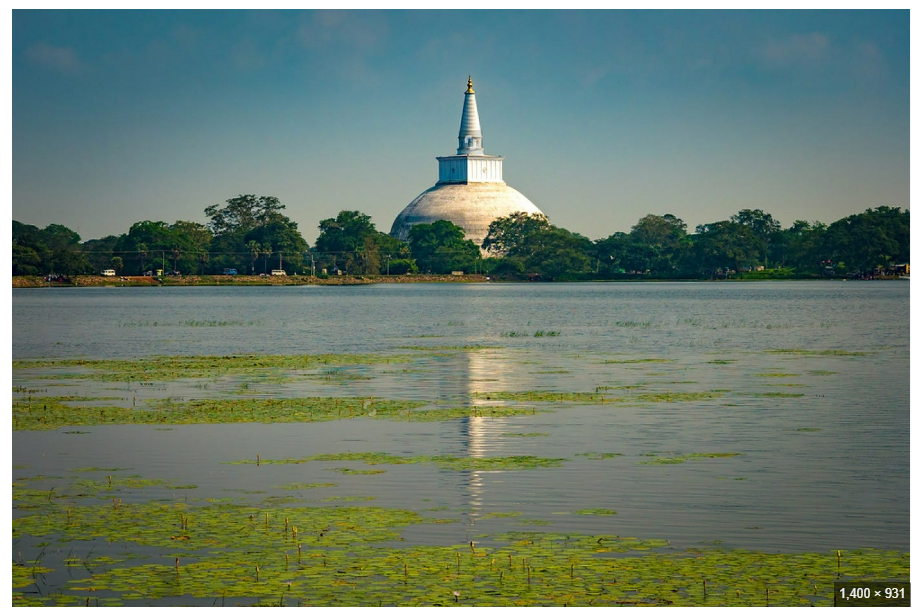
The Sacred City of Anuradhapura stands as a timeless testament to Sri Lanka’s rich cultural and spiritual heritage. Once the bustling capital of ancient Sri Lanka, Anuradhapura is now a UNESCO World Heritage Site, celebrated for its stunning architectural marvels, sacred Buddhist landmarks, and vibrant history spanning over a thousand years.
Home to the Sri Maha Bodhi, the oldest historically documented tree in the world, and monumental stupas like the Ruwanwelisaya, Anuradhapura holds immense significance for Buddhists and history enthusiasts alike. Visitors are drawn to this ancient city to marvel at its archaeological wonders and to immerse themselves in the spiritual ambiance of a site that has been revered for centuries.
Whether you’re a history buff, a cultural traveler, or simply seeking a serene escape, Anuradhapura promises an unforgettable journey through time, where ancient traditions and natural beauty blend harmoniously.
Table of Contents
Historical Significance
The Sacred City of Anuradhapura is one of the oldest continuously inhabited cities in the world, serving as the first capital of ancient Sri Lanka for over 1,300 years. Established in the 4th century BCE by King Pandukabhaya, Anuradhapura became the political, religious, and cultural epicenter of Sri Lanka during its golden age.
Its prominence grew further in the 3rd century BCE when Buddhism was introduced to Sri Lanka by Arahat Mahinda, the son of Emperor Ashoka of India. This transformative moment led to Anuradhapura’s development as a spiritual hub, with the construction of stupas, monasteries, and the planting of the Sri Maha Bodhi – a sapling from the sacred Bodhi tree under which the Buddha attained enlightenment.
Anuradhapura also played a pivotal role in advancing ancient Sri Lankan civilization. It was renowned for its advanced irrigation systems, including vast reservoirs such as the Tissa Wewa and Basawakkulama, which supported agriculture and sustained the growing population.
Despite invasions and the eventual relocation of the capital to Polonnaruwa in the 11th century, Anuradhapura remains a symbol of resilience and cultural pride, preserving the legacy of Sri Lanka’s ancient rulers and its deep connection to Buddhism. Today, the city offers a glimpse into a bygone era, where history comes alive through its awe-inspiring ruins and sacred sites.
Key Attractions in the Sacred City
a) Sri Maha Bodhi (Sacred Bo Tree)
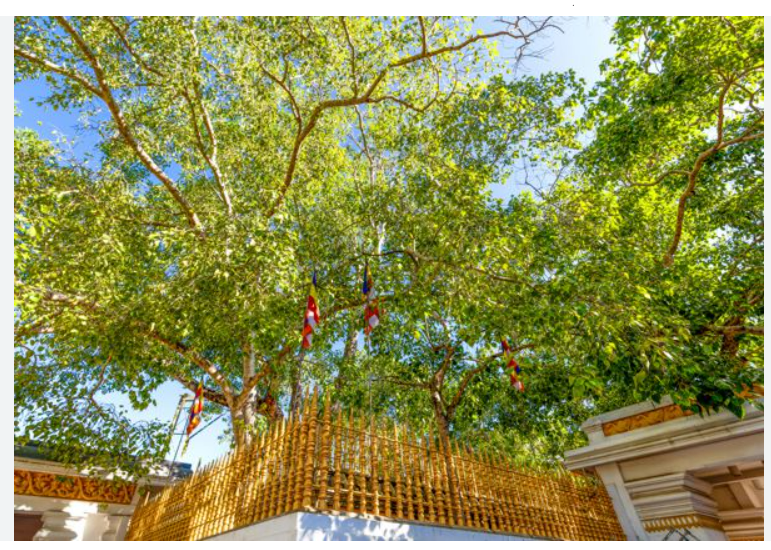
The Sri Maha Bodhi in Anuradhapura is one of the most revered and historically significant landmarks in Sri Lanka. This sacred fig tree, planted in 288 BCE, is a direct descendant of the Bodhi tree in Bodh Gaya, India, under which the Buddha attained enlightenment. It is the oldest historically documented tree in the world, with its lineage and care recorded for over 2,000 years.
Brought to Sri Lanka by Sanghamitta Theri, the daughter of Emperor Ashoka and a Buddhist nun, the Sri Maha Bodhi symbolizes the introduction and flourishing of Buddhism on the island. Its planting was a momentous occasion, reflecting the deep spiritual ties between Sri Lanka and Buddhism.
Today, the Sri Maha Bodhi is a place of pilgrimage for Buddhists from around the world. Devotees visit to pay homage, offer flowers, and seek blessings under its spreading branches. The tree is surrounded by a golden fence for protection, and the area is steeped in a serene and sacred atmosphere.
b) Ruwanwelisaya Dagoba
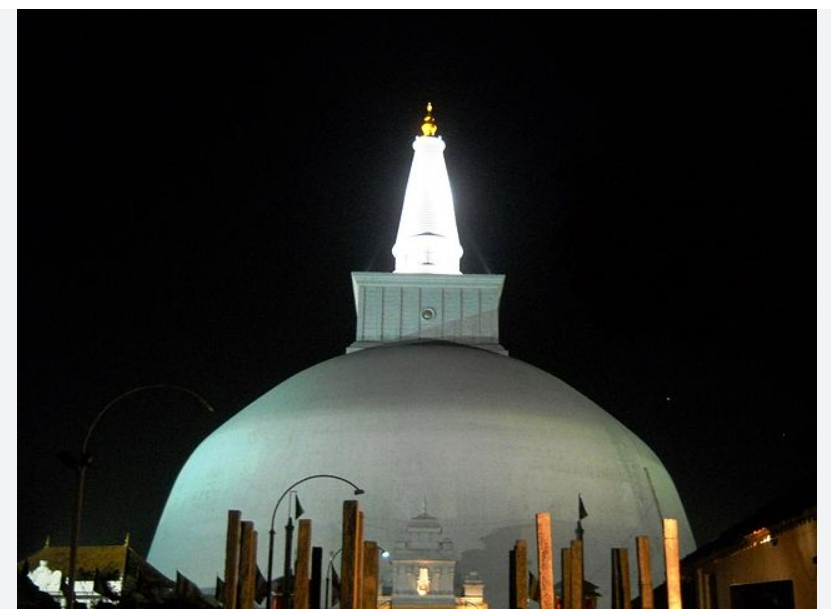
The Ruwanwelisaya Dagoba, also known as the Great Stupa, is one of the most iconic and revered monuments in Anuradhapura. Built in 140 BCE by King Dutugemunu, a legendary ruler of Sri Lanka, this majestic stupa is a symbol of the island’s devotion to Buddhism and its architectural brilliance.
Standing at an impressive height of 103 meters with a circumference of 290 meters, Ruwanwelisaya was once one of the tallest structures in the ancient world. Its gleaming white dome, crowned by a golden pinnacle, dominates the skyline of Anuradhapura, embodying spiritual purity and strength.
According to Buddhist tradition, the stupa enshrines relics of the Buddha, making it a sacred pilgrimage site. The stupa’s construction is said to have been guided by divine inspiration, with King Dutugemunu dedicating his life to this monumental project as a tribute to Buddhism.
c) Jetavanarama Stupa
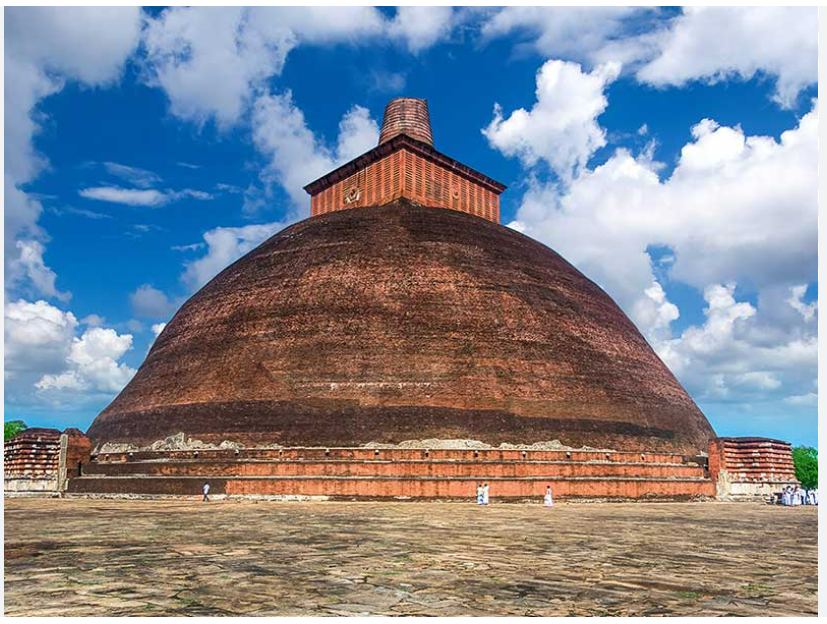
The Jetavanarama Stupa, located in the heart of Anuradhapura, is a monumental achievement of ancient Sri Lankan engineering and architecture. Built during the 3rd century CE by King Mahasena, it was once the tallest stupa in the world and the third-tallest structure of antiquity, standing at an impressive 122 meters (400 feet) in height. Although time and nature have reduced its height to about 71 meters, its grandeur remains undiminished.
This colossal stupa was constructed with over 93 million baked bricks, showcasing the advanced construction techniques of ancient Sri Lanka. The Jetavanarama Stupa was part of the larger Jetavana Monastery, which served as a prominent center for Buddhist learning and monastic life.
One of the stupa’s key highlights is its claim to enshrine a sacred relic of the Buddha – a fragment of his belt. This has made Jetavanarama a site of immense spiritual significance for Buddhists worldwide.
d) Thuparamaya Dagoba
The Thuparamaya Dagoba holds the distinction of being the oldest stupa in Sri Lanka, dating back to the 3rd century BCE. Constructed by King Devanampiya Tissa, it marks an important milestone in the history of Buddhism on the island, as it was the first stupa built after Buddhism was introduced to Sri Lanka by Arahat Mahinda, the son of Emperor Ashoka of India.
The Thuparamaya is not just an architectural marvel but a deeply sacred site, as it is believed to house a relic of the Buddha’s collarbone. This relic, which was brought to Sri Lanka by Arahat Mahinda, was enshrined within the stupa and continues to attract pilgrims to this day.
The stupa’s architecture reflects early Buddhist designs, with its simple yet graceful structure made of stone and brick. Its circular dome and pavilion-like structure create a tranquil ambiance, offering visitors a sense of serenity and connection to ancient Buddhist practices.
e) Isurumuniya Temple
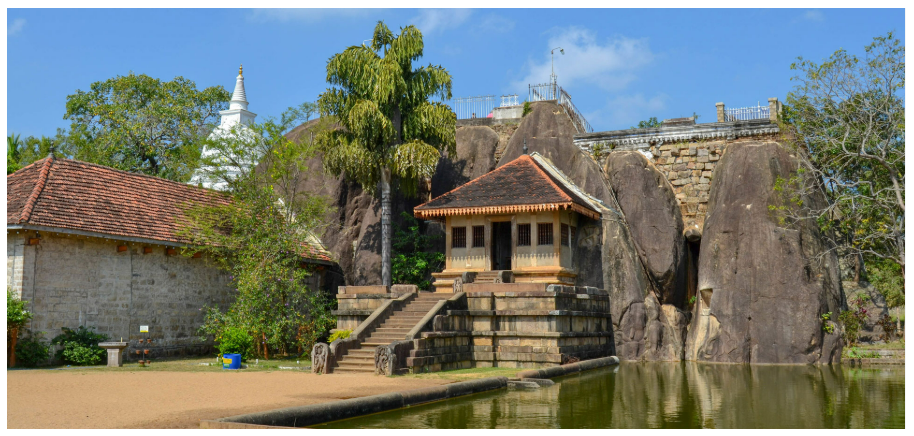
The Isurumuniya Temple, located on a scenic hill near the edge of the Tissa Wewa reservoir, is one of Anuradhapura’s most picturesque and historically fascinating sites. Dating back to the 3rd century BCE, this ancient temple is renowned for its stunning rock carvings, intricate sculptures, and deep connection to Sri Lanka’s royal heritage.
The temple was originally built by King Devanampiya Tissa and later renovated by King Vattagamani Abhaya. It was designed as a monastic complex, housing a group of monks, and its peaceful surroundings create a serene atmosphere perfect for reflection and meditation.
One of the temple’s most celebrated features is the Isurumuniya Lovers – an exquisitely carved stone relief depicting a royal couple. This artwork is believed to represent a love story from ancient Sri Lankan folklore, and it has become an iconic symbol of the temple. Visitors often marvel at the delicate carving, which captures the timeless beauty and emotion of the scene.
Cultural and Religious Importance
The Sacred City of Anuradhapura is a cornerstone of Sri Lanka’s cultural and religious identity, particularly as a major center of Buddhism. As the heart of the island’s ancient civilization, Anuradhapura played a pivotal role in the spread of Buddhist teachings across Sri Lanka and Southeast Asia. The city’s spiritual significance is deeply intertwined with its monumental stupas, temples, and sacred relics, which continue to attract pilgrims from all over the world.
At the core of Anuradhapura’s religious importance is the Sri Maha Bodhi, a sapling of the Bodhi tree under which the Buddha attained enlightenment. This sacred tree is a symbol of enlightenment and has become a pilgrimage site for Buddhists seeking blessings and spiritual solace. The tree’s presence in Anuradhapura, along with the many stupas that enshrine relics of the Buddha, underscores the city’s enduring role in preserving and promoting Buddhism in Sri Lanka.
Anuradhapura’s cultural richness is also reflected in its ancient architecture, which combines religious symbolism with local artistic traditions. The massive stupas, intricately carved stone pillars, and beautifully landscaped gardens reflect the devotion and craftsmanship of the rulers and people who built them. Many of these structures, like the Ruwanwelisaya and Jetavanarama, serve not only as religious landmarks but as monuments to the enduring power of faith.
Nearby Attractions
Mihintale
Located just 12 kilometers southeast of Anuradhapura, Mihintale is often considered the cradle of Buddhism in Sri Lanka. It is here that Arahat Mahinda is believed to have first introduced Buddhism to King Devanampiya Tissa in 247 BCE. The site is famous for its stunning mountain views, ancient stupas, and sacred relics. The climb up the Mihintale mountain offers breathtaking views of the surrounding area, and along the way, visitors can explore the Ambasthala Dagoba, Aradhana Gala, and other ancient ruins.
Wilpattu National Park
For nature lovers and wildlife enthusiasts, Wilpattu National Park, located about 30 kilometers north of Anuradhapura, is one of Sri Lanka’s oldest and most famous wildlife reserves. Known for its unique villus (natural lakes), the park offers excellent opportunities for safaris where visitors can spot wildlife such as leopards, elephants, sloth bears, and a wide variety of bird species. Wilpattu is less crowded than some of Sri Lanka’s other national parks, making it a serene spot for wildlife exploration.
Ritigala
About 43 kilometers northeast of Anuradhapura, Ritigala is an ancient Buddhist monastery and nature reserve set amidst a unique landscape. Known for its ruins, including a meditation center, water tanks, and stone inscriptions, Ritigala provides a peaceful and spiritual atmosphere. The mountain range is also a haven for trekkers, with a marked trail leading to the summit, offering panoramic views of the surrounding forests and plains.
Conclusion
The Sacred City of Anuradhapura is not just a collection of ancient ruins; it is a living testament to the enduring spiritual and cultural legacy of Sri Lanka. From the awe-inspiring Sri Maha Bodhi to the monumental Ruwanwelisaya and Jetavanarama Stupa, every corner of this historic city offers a glimpse into the profound Buddhist heritage that shaped Sri Lankan civilization.
Whether you’re a history enthusiast, a spiritual seeker, or someone simply looking to experience the beauty of ancient architecture and serene landscapes, Anuradhapura has something to offer. The city’s peaceful atmosphere and sacred sites provide a unique opportunity for reflection, offering both historical insight and spiritual enrichment.
Beyond the city’s boundaries, the surrounding attractions like Mihintale, Wilpattu National Park, and Ritigala offer additional layers of exploration, making Anuradhapura a central hub for anyone wishing to discover the depths of Sri Lanka’s past.
A visit to Anuradhapura is not just a journey through time, but an invitation to connect with the heart of Sri Lanka’s Buddhist culture, a place where history, faith, and nature come together in perfect harmony.
FAQs
What is the best time to visit Anuradhapura?
The best time to visit Anuradhapura is during the dry season from November to April. This period offers comfortable weather with less chance of rain, making it ideal for sightseeing and exploring the ancient ruins. The monsoon season (May to October) is quieter, but it can be more challenging to visit due to rainfall.
How do I get to Anuradhapura?
Anuradhapura is accessible by train, bus, or car. Trains from Colombo and other cities are a comfortable and scenic option. Buses are affordable and run frequently from major towns. If you prefer flexibility, you can hire a car or take a taxi for a more convenient journey. Anuradhapura is about a 4-5 hour drive from Colombo.
Is there an entry fee to visit Anuradhapura’s sacred sites?
Yes, there is an entry fee to access the key archaeological sites in Anuradhapura. The Sacred City Pass covers many attractions and costs around USD 25 (or equivalent in Sri Lankan Rupees). Individual sites may have small fees as well, but the pass makes it easier to visit multiple locations.
What should I wear when visiting Anuradhapura?
When visiting sacred sites in Anuradhapura, it is important to dress modestly. Both men and women should cover their shoulders and knees as a sign of respect. It’s recommended to wear comfortable clothing and footwear since you’ll be walking around historical sites, and remember to remove shoes before entering temples and stupas.
What are the nearby attractions to visit while in Anuradhapura?
In addition to the main sites in Anuradhapura, there are several nearby attractions worth visiting:
Mihintale: A mountain monastery where Buddhism was first introduced to Sri Lanka.
Wilpattu National Park: A wildlife sanctuary offering safaris and opportunities to spot leopards, elephants, and more.
Ritigala: An ancient Buddhist monastery and nature reserve with scenic hikes.
Tissa Wewa: A peaceful reservoir perfect for a relaxing day by the water.
Anuradhapura Archaeological Museum: A museum showcasing artifacts from the city’s ancient past.

1 thought on “Sacred City of Anuradhapura”